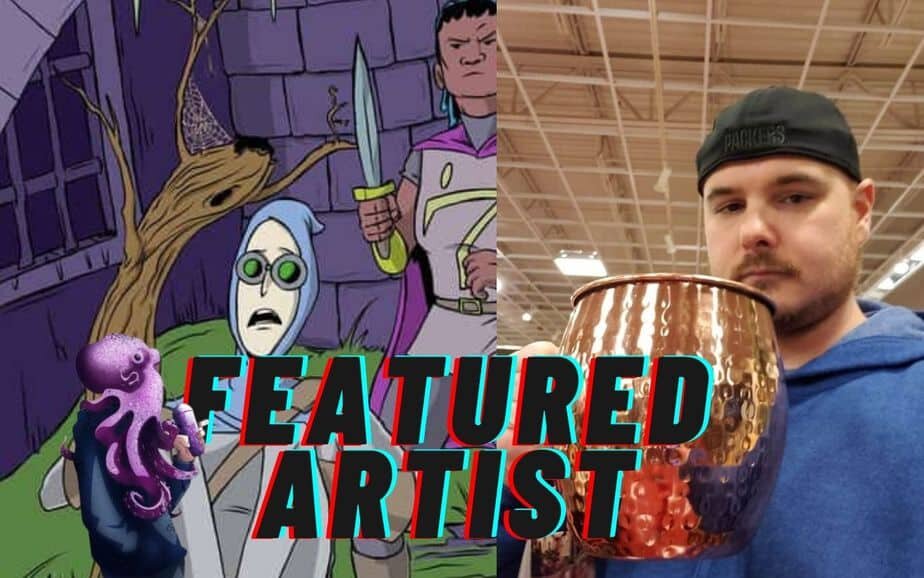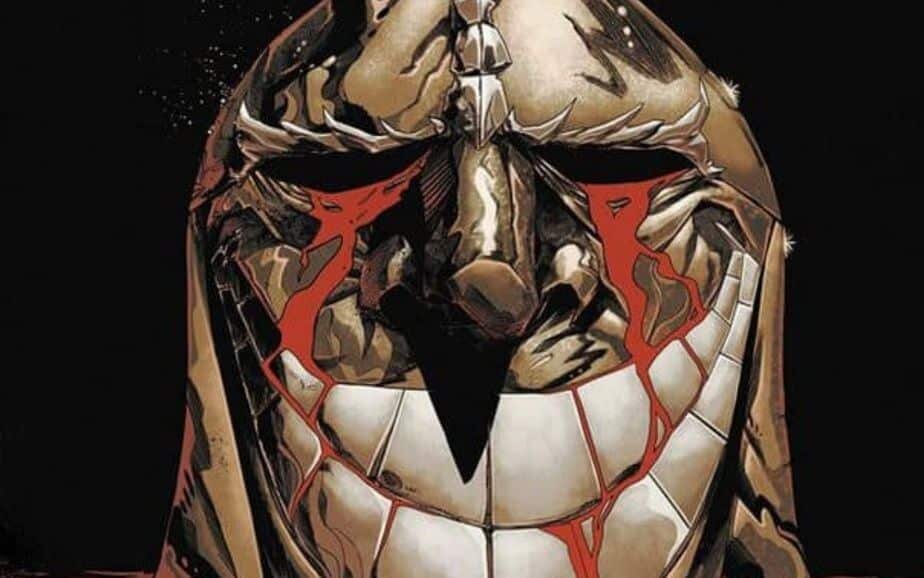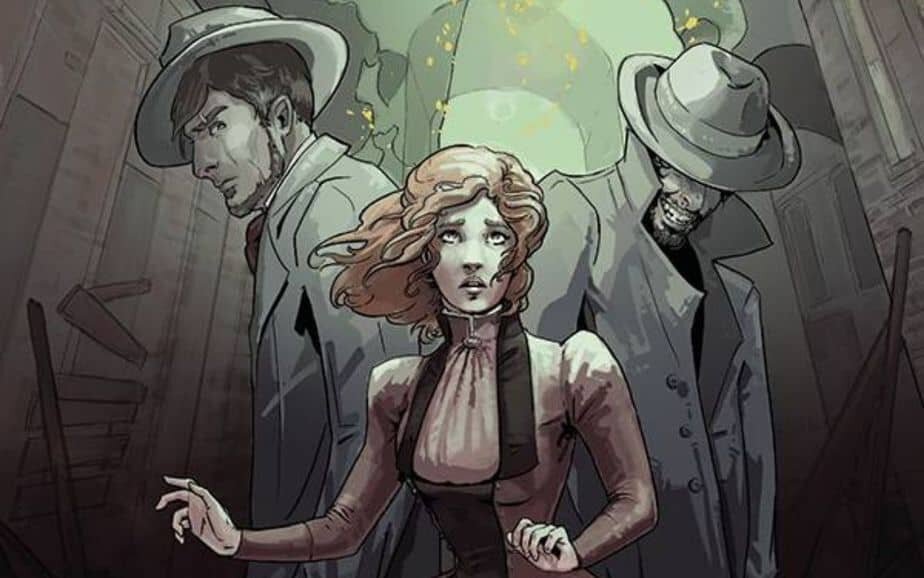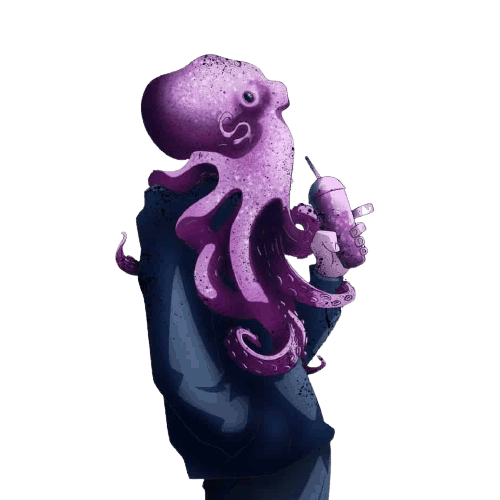
THE “HEART/NO HEART” TEST
I have never felt so bullied into loving something as much as I was before reading Canto Vol. 1. This book wants you to love it; you can’t simply enjoy it or like it, that would be mediocre from your part. You HAVE to love it, and it tells you so right away. Not even two pages in, I was already being bombarded by a myriad of quotes lauding the book for how amazing, for how life-changing, for how revolutionary it was.
[wp-review]
The book has an entire (and lavishly designed) page dedicated to a no-holds-barred attack directed at the reader’s psyche: “Listen here, either you love this piece of entertainment as much as these folks did before you, or you are confirming publicly your lack of heart.”
Well, inanimate object, I’ll have you know that I read through all your 180 pages of digitally collected comic pages and, you know what? You were right. I have no heart, because I kind of didn’t care for this thing at all.
LIKE IN THE ENDING OF “THE WIZARD OF OZ”, IT’S NOT ABOUT WHAT YOU WANT, IT’S ABOUT WHAT YOU GET

My first approach to Canto Vol. 1 happened over on a chat involving various members of . The person that was originally tasked with reviewing this particular comic decided to break up with it and dump the obligation on someone else’s shoulders. Without giving us many details about the why’s and why not’s, they revealed they had spent around a week and a half with the material inside their mind, analyzing it, replaying key moments, thinking about how it made them feel – LIVING the material.
Despite that, despite all the mindpower and time they invested on this particular book, they came out empty handed. As such, they decided the most sensible choice was to forfeit their reviewing dibs and move on to something else.
“Why?”, I asked.
“I couldn’t do anything with it”, they said.
With those six words alone, this person made me climb the mountain of “piqued my interest in something I didn’t even know existed” in a manner of seconds. Prior to that conversation I wasn’t even aware that Canto was a thing and now I needed to live through it, to know how hard it could break someone’s ego until you were left with nothing to say about it. I mean, how can you possibly end up shooting blanks when talking about a book you’ve read back to back?
If it sucks, you can try to compose a paragraph or two talking about how terrible it is, describe the amounts of pain the thing is causing you just by existing. If it’s good, you rave about it, transcribe the high points and what heart strings each one tugs in an effort to entice people to join you in your euphoria.
If by any chance, it’s nothing but mediocrity made drawings, you can take the high road and meander around for five-hundred words without actually saying anything concrete about the damn thing. But “couldn’t do anything with it”? What was the issue? I just HAD to know.
“I’LL TAKE IT!”, I screamed in all-caps.
And just like that, the task of reviewing Canto Vol. 1 had been bestowed upon me. The object of desire had been achieved almost as soon as it had been created. Now I would bear the cross of reading the book and finding exactly what it was that made someone say “I couldn’t do anything with it.”
THIS REVIEW HAS BEEN WRITTEN BY A ROBOT, APPARENTLY.

In theory, Canto should work. It’s a fantasy story about how important it is to be yourself and about how bravery comes in all forms and shapes and so on. One such story tends to come about every three or four years, whenever a blooming author decides they’ve reached that point in their career where it’s time to try to recapture the magic of the stories they grew up with. We have plenty of those nostalgia-ridden epics all over and, more often than not, they work.
They might not be genre-defining or create fan clubs the world over, but they are memorable pieces of work that people evoke with a smile. Some might fair like Eragon, some might become juggernauts of melancholy akin to Jim Henson’s Labyrinth. Whatever the path their audience takes them in, they tend to stand on their own as enjoyable products of their time. And, one of the reasons for this is also one of their defining characteristics: they dare to take risks, to try and do something that is either new or a common trope with a twist.
It could be as simple as “the story is being read by a kid that is also writing the story itself”, or as complex as “fantasy story but treated as an imperial account of the politics of a multicontinental war where magic is involved”. Either way, they have ‘the thing’ that makes them stand apart.
Canto, on the other hand, is like “nah, screw that, let’s make a vanilla fantasy story that follows every plot point and plot twist to a T. Taking risks is for little babies.”
To be fair, though, the beginning of Canto is extremely promising. We get glimpses of a complex world filled to the brim with fantastical creatures with names you will not be able to remember once you finish reading. Human beings seem to be absent on this world and, despite this, the medieval aesthetic of the real has taken over all facets of fashion for many millennia – feudalism included!
The story begins with sweeping shots of concentration camp-like areas of miniature robots being enslaved and whipped by deer-boar muscular creatures. An ominous narration that talks about how important stories are for the betterment of society is placed above every panel, foreshadowing the darkness to come.
Better yet, art on these first few pages, what with clear influences of the “if you really need me to draw all of those details on every page, I’m afraid I’ll have to go for the sketch-like inks and never look back” school of thought, is amazing. Detailed and rushed at the same time. But it works. Things have weight, faces have personality, the on-page violence matters. You can even smell the setting, feel trapped inside a claustrophobic line of metallic workers doing… unspecified things for unspecified reasons.
Then comes the lore, about how our main character is part of a race of robots that are either made or born with actual hearts, hearts that are then ripped off from their chests and replaced by actual clocks. Then you find out these robots are even prohibited from having actual names, taking away every strip of “humanity” they might still hang on to. There’s drama, there’s the question of what the hell is going on, there are hints of an underdog revolution happening at one point or another.
Turns out, our main character, titular Canto, actually has a name. He’s the only one with a name in his slave commune. It was given to him by his love interest, the character of female robot. Turns out, due to her giving him a name, she ends up being on the brink of death. Fueled by love, Canto has to take on an incredible journey across a continent? A country? An Island in the sky? in order to find out where the enslavers keep their hearts and bring the character of female robot back to life.
Canto offers up a great foundation. The premise, while not very original, is detailed enough to make people want to follow it. Its universe, while not defined at all, looks solid enough to offer up endless possibilities. The art is good, the philosophical waxing was a bit too on the nose, but not terrible. All in all, a very strong start.
It was at this point, 32 pages in, where I was asking myself how could someone not enjoy this thing. I know first impressions are just that, impressions, but to be able to keep the illusion of awesomeness for so much time was a herculean task. Either this was a very intricate fluke, or it was just a taste of things to come.
I couldn’t actually find anything particularly wrong with this comic book. I mean, I wasn’t being blown away by it, but I was being entertained. There was enough information for me to try to come up with at least ten conceivable plots that sounded enticing.
“I’ve read the first part, it’s alright. What’s so wrong with it?”, I wrote on the chat where I first found out Canto existed. I was about to press send and contact the person that ended their relationship with this book directly. But something stopped me. An invisible force coming all the way from inside my brain.
“You’ve been in this situation before”, I thought. “You’ve already read many a thing where the first few chapters are amazing and then the creative team forgets how to talent and ruin everything by the end.” “You’re right inside voice, I need to wait a bit more before I share my thoughts on this. Otherwise I’ll look like an idiot.”
FIRST CHAPTER SYNDROME.

Almost at the midpoint of the book, there is a scene where two guards are supposed to prevent Canto from entering somewhere. Up until that point, everything has been a series of serious moments that emphasize how dire Canto and his universe’s situation is. There has been nary a momentary chuckle, nor a visual gag hidden behind the piles of dead bodies appearing on several of the book’s panels. Suddenly, these two guards star bartering with each other, launching “humorous” attacks against each other that lack any inkling of actual humor. This goes on for five entire pages.
FIVE.
ENTIRE.
PAGES.
I assume we’re supposed to take this as a momentary breather between all the excitement and action we’ve, allegedly, been through so far. But this sticks like a sore thumb in a story that tries to sell itself as a serious epic. Up to that point I didn’t know if I was enjoying the barrage of well-drawn tropes being thrown at my eyes. The guard scene gave me my answer.
“Thanks, I hate it!”
To quote what New Found Glory once said during the chorus of one of their singles: “And it’s all downhill from here.” As soon as Part II begins, the creative team either didn’t know how to follow-through on their amazing introduction, or IDW gave them no more than a week to finish the entire run of their comic book. Something wicked must have happened because the rest of the issues are uninspired dribble that does not hold up to the standards set by their own premiere effort.
For example, despite spending an entire first chapter describing the relationship and characteristics of three separate species and their relationships to each other, starting on page 34 creatures and concepts are introduced and disposed of in a matter of pages. It’s like “we have this creature that resembles the bastard child of a Phoenix and a horse that has the ability to change size because reasons.
We could explain what this is, if it’s rare or common, but wouldn’t it be better if it turned out to be a Deus Ex Machina that we foreshadowed earlier? Also, in our universe Giants are planted on the ground. No, there’s no need to explain why or how they live. It just looks cool! Are you enjoying our story so far?”
As if that wasn’t enough, a bunch of character archetypes start to come and go, their existence and personal objectives never even explained properly. They’re just there because fantasy stories have them and, ergo, Canto needs them in order to be considered part of the genre. “Well, you’ve read other fantasy stories, right? This mysterious hooded figure here is like our version of Aragon, so we don’t need to say anything about her character. She also uses a sword! Isn’t she cool?”.
Entire elements from The Wizard Of Oz, the story the damn book keeps referencing as one of the influences of the plot, are lifted beat by beat. “Wizard-like character with unexplained machine whose levers and buttons do whatever the story needs them to? Check! The illusion of a giant head to scare people away? Check! An end goal called Emerald something with a yellow brick road leading you directly to the ruler of the place? Check! Lack of originality? Double check!”
And it’s not only the story that suffers from “we have no idea what we’re doing” syndrome. Suddenly, as the story moves forward, the art starts to deteriorate further and further, as if The Nothing was attacking the artist’s hands, one tendon at a time. As you keep reading, one of your rewards is seeing less and less details. Things that are complicated to draw but are essential to understanding plot points, start being obscured behind closed up elements.
Entire panels are copied and pasted multiple times over the course of the narrative. Characters gradually lose their ability to emote or are unable to attain any facial expression other than “seriousness”. There’s even a point, near the end, where a handful of characters seen from far away are drawn as literal stick figures. Now, this sort of technique would be forgiven, if the entire point of the panel they are featured in wasn’t to actually see these characters reacting to their environment. You can’t even tell what race they’re supposed to be.

Worst part yet is the ending. While they do try to write something that subverts expectations (by actually following all the expected clichés of supposed subversion), and there’s a bit of interesting ideas thrown in the mix, they end the whole thing by ripping a page from The Hunger Games. The foulest page, in fact.
The team behind Canto dared to do the “and in the end, a lot of very interesting things happened, but you didn’t see them because the main character was knocked out when they happened. That’s right, an entire revolution happened offscreen! So, you better imagine what happened and how because we didn’t want to do it for you – even though that is literally our job!
I gave Canto Vol. 1 a bunch of my time and the only thing I got in return was an amateur Dungeon Master’s improvised story that tries to be deep by being edgy. The book itself force me to have really high expectations about it and, in the end, it gave nothing but the feeling of defeat best surmised by “I’ve seen all of this done miles better somewhere else.”
Reading Canto past its first chapter is unnecessary. If you so wish to embark in this The Hobbit knockoff, you should read issue 1, an almost perfect bit of thunder in a bottle of printed pages. Once you’re done, proceed to imagine the series got cancelled. Now it’s up to you to continue the story on your own on Wattpad. Nothing of value will be lost.
As I found out, it’s not like you “couldn’t do anything with” Canto Vol. 1. It’s that the creative team DIDN’T know what to do with their own creation.
If you want to experience something that feels so much like The Wizard of Oz, why not watch The Wizard of Oz instead?











